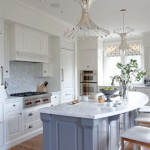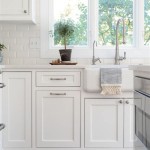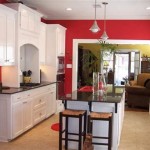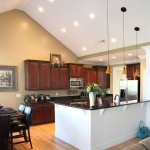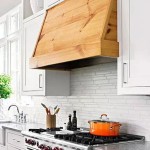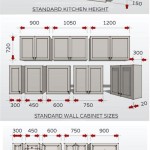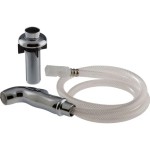The Advantages of LED Kitchen Lights: Efficiency, Aesthetics, and Functionality
Kitchen lighting is a critical component of a functional and aesthetically pleasing home. Proper illumination enhances visibility for food preparation, creates an inviting atmosphere for dining, and contributes to the overall design of the space. Light-emitting diode (LED) technology has revolutionized kitchen lighting, offering significant advantages over traditional incandescent and fluorescent options. This article explores the benefits of using LED lights in the kitchen, focusing on energy efficiency, design flexibility, and functional performance.
Energy Efficiency and Cost Savings
One of the most compelling reasons to switch to LED kitchen lights is their exceptional energy efficiency. LEDs consume significantly less power than incandescent bulbs to produce the same amount of light output, measured in lumens. For instance, a traditional 60-watt incandescent bulb can be replaced with an LED bulb requiring only 8-12 watts to achieve comparable brightness. This reduction in energy consumption translates directly into lower electricity bills. Over the lifespan of an LED bulb, the cumulative savings can be substantial, especially considering the prolonged use of kitchen lighting.
The longevity of LED bulbs further contributes to cost savings. LEDs boast a significantly longer lifespan compared to incandescent and fluorescent lights. While an incandescent bulb might last for around 1,000 hours, and a fluorescent bulb for approximately 8,000 hours, LED bulbs can last for 25,000 hours or more. This extended lifespan reduces the frequency of bulb replacements, minimizing maintenance efforts and the associated costs. The reduced need for replacement also contributes to environmental sustainability by minimizing waste.
The energy efficiency of LEDs also has a positive impact on the environment. By consuming less electricity, LEDs contribute to a reduced demand for power generation, which in turn lowers greenhouse gas emissions. This environmental benefit aligns with the growing emphasis on sustainable living and responsible energy consumption. Embracing LED kitchen lighting is a practical step towards a more eco-friendly lifestyle.
Furthermore, many utility companies offer rebates and incentives for homeowners who switch to energy-efficient LED lighting. These programs can further offset the initial cost of LED fixtures and bulbs, making the transition even more financially attractive. Investigating available rebates in one's local area can significantly reduce the upfront investment required for upgrading kitchen lighting.
The overall cost profile of LEDs presents a compelling argument for their adoption in kitchen lighting. While the initial purchase price of an LED bulb might be higher than that of a traditional bulb, the long-term cost savings due to reduced energy consumption and bulb replacements significantly outweigh the initial investment. Over the lifespan of the bulbs, the total cost of ownership is considerably lower for LEDs.
Design Flexibility and Aesthetic Versatility
Beyond energy efficiency, LED kitchen lights offer a high degree of design flexibility and aesthetic versatility. LEDs are available in a wide range of shapes, sizes, and color temperatures, allowing homeowners to customize their kitchen lighting to suit their specific needs and preferences. This adaptability makes LEDs suitable for various kitchen styles, from modern and minimalist to traditional and rustic.
LED strip lights are particularly popular for under-cabinet lighting, providing focused illumination for countertops and work surfaces. These flexible strips can be easily installed and concealed, creating a seamless and unobtrusive lighting solution. LED strip lights are available in various colors and brightness levels, allowing for customized ambiance and task lighting. They can be used to highlight specific areas of the kitchen, such as backsplashes or decorative elements.
Recessed LED lights are another versatile option for kitchen lighting. These lights are installed flush with the ceiling, providing a clean and streamlined look. Recessed LEDs can be used as general lighting to illuminate the entire kitchen, or they can be strategically placed to highlight specific areas or features. They are available in various sizes and brightness levels, and they can be dimmed to create a more intimate atmosphere.
Pendant LED lights can add a decorative touch to the kitchen, especially over islands or breakfast bars. These lights come in a wide range of styles and materials, from modern and sleek to rustic and charming. Pendant LEDs can serve as both functional lighting and decorative accents, enhancing the overall aesthetic of the kitchen. The availability of dimmable LED pendants allows for adjusting the light intensity to create different moods.
The availability of different color temperatures in LED lighting is another significant advantage. Color temperature is measured in Kelvin (K), with lower numbers indicating warmer, yellower light and higher numbers indicating cooler, bluer light. Warm white light (2700K-3000K) is ideal for creating a cozy and inviting atmosphere, while cool white light (4000K-5000K) is better suited for task lighting, providing brighter and more focused illumination. Daylight (6000K-6500K) mimics natural sunlight and is often used in kitchens for its ability to enhance visibility and reduce eye strain. The ability to choose the appropriate color temperature for different areas of the kitchen allows for creating a customized and functional lighting scheme.
Functional Performance and Enhanced Visibility
The functional performance of LED kitchen lights is another key benefit. LEDs provide bright, consistent, and flicker-free illumination, enhancing visibility and reducing eye strain. This is particularly important in the kitchen, where tasks such as chopping, slicing, and cooking require precise vision. LEDs also produce minimal heat, making them safer to use in enclosed spaces, such as under-cabinet lighting.
LEDs offer excellent color rendering, meaning they accurately display the colors of objects. This is crucial in the kitchen for tasks such as judging the ripeness of fruits and vegetables or ensuring the proper coloration of cooked food. A high Color Rendering Index (CRI) indicates that the light source accurately renders colors, with a CRI of 80 or higher generally recommended for kitchen lighting. LEDs typically have a higher CRI than fluorescent lights, providing more accurate color representation.
The instant-on capability of LEDs is another practical advantage. Unlike fluorescent lights, which can take several seconds to reach full brightness, LEDs turn on instantly. This is especially convenient in the kitchen, where immediate illumination is often needed. The ability to dim LED lights also allows for adjusting the light intensity to suit different tasks and moods. Dimmers can be used to create a more relaxed atmosphere for dining or to provide brighter light for food preparation.
LEDs are also resistant to vibration and impact, making them more durable than traditional bulbs. This is particularly important in the kitchen, where accidents can happen. The sturdy construction of LEDs makes them less likely to break or shatter, reducing the risk of injury. The absence of mercury in LEDs also makes them a safer and more environmentally friendly option compared to fluorescent lights.
The focused light output of LEDs is another advantage for kitchen lighting. Unlike incandescent bulbs, which emit light in all directions, LEDs emit light in a more concentrated beam. This allows for directing the light precisely where it is needed, such as on countertops or cooking surfaces. The focused light output of LEDs also reduces light pollution, minimizing glare and stray light. This contributes to a more comfortable and efficient lighting environment in the kitchen.
In conclusion, LED kitchen lights offer a multitude of benefits, including energy efficiency, design flexibility, and functional performance. The long-term cost savings, aesthetic versatility, and enhanced visibility make LEDs an excellent choice for any kitchen. The superior energy efficiency, long lifespan and design options makes LED lighting a cost effective and well performing option compared to traditional lighting. By taking the factors presented and aligning with individual needs and desires; homeowners can choose the best light option for their kitchen.

How To Choose And Install Led Strip Lights For Kitchen Cabinets

How To Install Above Cabinet And Under Led Strip Lighting Super Bright Leds

Kitchen Lighting Advice On Completing The Look In 2024

Kitchen Lighting Ideas Get Cookin And Transform Your Space Magik

Vevor 4 Ft Led Wraparound Light 40 Watt 4500lm Flush Mount 6500k Daylight Kitchen Ceiling Lighting Fixtures Etl Ledhrdds4ft1j7tk7v6 The Home

Kitchen Glowunder Cabinet Rgb Led Light Strip 16ft Smd 5050 Kit Remote Power Ebay

Blue Under Cabinet Kitchen Lighting Plasma Tv Led Strip Sets

Led Kitchen Lighting The Quick Guide To Stunning Hut

How To Choose And Install Led Strip Lights For Kitchen Cabinets

Huoku Lumin 38 In 1 Light White Integrated Led Flush Mount Minimalist Long Oval Ceiling Pd1046021 The Home

